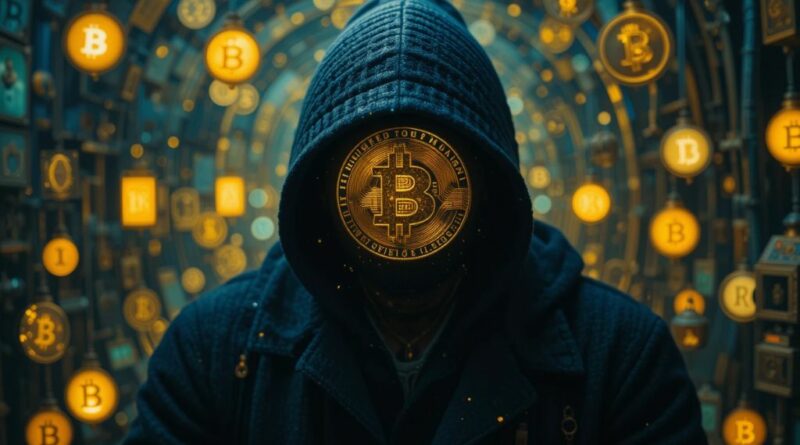Satoshi Nakamoto The Cryptocurrency Phantom
In the shadowy corners of the internet, a legend was born. A figure who appeared from nowhere, revolutionised global finance, and vanished without a trace—leaving behind a $94 billion fortune untouched. This is the story of Satoshi Nakamoto, the enigmatic creator of Bitcoin, whose true identity remains one of the 21st century’s greatest unsolved mysteries.
The Birth of Bitcoin
On 31 October 2008, as the global financial system teetered on the brink of collapse, an obscure cryptography mailing list received a message from someone calling themselves Satoshi Nakamoto. The message contained a whitepaper titled “Bitcoin: A Peer-to-Peer Electronic Cash System”—a nine-page document that would come to reshape our understanding of money itself.
“I’ve been working on a new electronic cash system that’s fully peer-to-peer, with no trusted third party,” wrote Nakamoto in that first message. The timing was impeccable—amid widespread disillusionment with traditional banking systems, Nakamoto proposed something revolutionary: a decentralised digital currency that could operate beyond the control of governments and financial institutions.
By January 2009, Nakamoto had released the first Bitcoin software and mined the “genesis block”—the first block in the Bitcoin blockchain. Embedded within this block was a headline from that day’s Times newspaper: “Chancellor on brink of second bailout for banks.” The message was clear: Bitcoin represented an alternative to a failing system.
The Phantom’s Brief Existence
For approximately two years, Satoshi Nakamoto remained active in the development of Bitcoin. Through forum posts, emails, and code contributions, they guided the fledgling cryptocurrency through its infancy. Yet despite this engagement, Nakamoto revealed remarkably little about themselves.
In their online profiles, Nakamoto claimed to be a Japanese man born on 5 April 1975. However, their perfect English and coding style led many to doubt this self-description. Their posting times, analysed by researchers, suggested they lived in North America or the UK rather than Japan.
Then, in April 2011, Nakamoto sent a final message to a fellow Bitcoin developer: “I’ve moved on to other things.” They handed over control of the source code repository and key domains to Gavin Andresen, disappeared from the forums, and ceased all public communication. The creator of Bitcoin had vanished as mysteriously as they had appeared.
The $94 Billion Question
Perhaps the most extraordinary aspect of the Satoshi Nakamoto mystery is the fortune they left behind. During Bitcoin’s early days, Nakamoto is estimated to have mined approximately one million bitcoins—a stash that, at today’s valuations, would be worth an astounding $94 billion.
These bitcoins, stored in numerous wallets, remain untouched. Blockchain analytics confirm that none of Nakamoto’s coins have ever been spent or transferred, creating one of history’s most valuable dormant treasures.
This immense wealth has fuelled endless speculation. Is Nakamoto unable to access these funds? Did they perish, taking the private keys to their grave? Or are they simply exercising remarkable restraint, watching from afar as their creation transforms the world?
The Suspects: Who Could Be Satoshi?
Over the years, numerous candidates have been proposed as the real Satoshi Nakamoto. Each theory has its proponents and detractors, but none has been conclusively proven.
Nick Szabo
A cryptographer and legal scholar whose earlier work on “bit gold” bears striking similarities to Bitcoin’s eventual design. Linguistic analysis of Nakamoto’s writings has suggested parallels with Szabo’s distinctive style. Szabo has consistently denied being Nakamoto.
Hal Finney
A renowned cryptographic activist who received the first-ever Bitcoin transaction from Nakamoto. Finney, who lived just blocks away from a man named Dorian Satoshi Nakamoto (once falsely identified as Bitcoin’s creator), had the technical expertise to create the cryptocurrency. Finney passed away in 2014 after battling ALS.
Craig Wright
An Australian computer scientist who publicly claimed to be Satoshi Nakamoto in 2016. While Wright has aggressively asserted his identity as Nakamoto in media interviews and even in court cases, his claims have been widely dismissed by the cryptocurrency community due to his failure to provide convincing cryptographic proof.
A Collective or Team
Some believe Satoshi Nakamoto might not be an individual at all, but rather a pseudonym for a group of developers who collaborated on Bitcoin’s creation. The breadth of expertise demonstrated in Bitcoin’s design—spanning cryptography, economics, and computer science—lends some credence to this theory.
Why the Mystery Matters
The true identity of Satoshi Nakamoto isn’t merely a trivial curiosity. It carries profound implications for the cryptocurrency ecosystem and beyond.
The concentration of such enormous wealth in the hands of Bitcoin’s creator represents a significant risk factor for the market. If Nakamoto were to suddenly sell their holdings, it could trigger massive price volatility across the entire cryptocurrency market.
Moreover, Nakamoto’s anonymity stands as a powerful symbol of Bitcoin’s core philosophy: a system built on mathematical proof rather than trust in individuals or institutions. As blockchain technology expands into diverse industries from supply chain management to voting systems, this principle of decentralisation continues to influence innovation far beyond digital currency.
The Legacy of Anonymity
Whether by design or circumstance, Nakamoto’s disappearance may have been the most brilliant aspect of Bitcoin’s creation. By removing themselves from the equation, they transformed Bitcoin from one person’s project into a truly decentralised movement.
The vacuum created by their absence has allowed Bitcoin to evolve organically, through open-source collaboration and community consensus. Without a central authority figure to defer to, the network has become remarkably resilient.
Decentralised finance (DeFi), non-fungible tokens (NFTs), and thousands of alternative cryptocurrencies have emerged in Bitcoin’s wake, all building upon the foundation that Nakamoto established. The market capitalisation of cryptocurrencies now exceeds $2 trillion, with applications extending far beyond simple peer-to-peer transactions.
Will We Ever Know?
Despite exhaustive investigations by journalists, researchers, and cryptocurrency enthusiasts, Satoshi Nakamoto’s true identity remains elusive. Some argue that, at this point, uncovering Nakamoto would be counterproductive—that the mystery itself has become an essential part of Bitcoin’s mythology and appeal.
Others maintain that identifying Nakamoto could provide valuable insights into Bitcoin’s original vision and intentions, helping to resolve ongoing debates about the cryptocurrency’s future development path.
Regardless of whether Nakamoto’s identity is ever revealed, their creation has irrevocably changed our relationship with money. From central bank digital currencies (CBDCs) to discussions about financial inclusion, the ripple effects of Bitcoin continue to reshape global finance.
The Phantom Watches
Perhaps somewhere, behind an anonymous screen, Satoshi Nakamoto is still watching. Observing as institutions that once dismissed Bitcoin now build strategies around it. Witnessing central banks experiment with digital currencies inspired by their creation. Seeing nations adopt Bitcoin as legal tender.
Or perhaps the creator of Bitcoin truly is gone—having accomplished their mission of launching a self-sustaining system that no longer needed their guidance.
Either way, the enduring mystery of Satoshi Nakamoto serves as a fitting metaphor for cryptocurrency itself: intangible yet immensely valuable, anonymous yet profoundly influential, and built not on trust in individuals, but on the elegant certainty of mathematics.
As Bitcoin and the blockchain revolution continue to evolve, one thing remains certain: the phantom of cryptocurrency has left an indelible mark on our world, whether or not they ever choose to step out of the shadows.
We’d love your questions or comments on today’s topic!
For more articles like this one, click here.
Thought for the day:
“Extraordinary things are always hiding in places people never think to look.” Jodi Picoult



